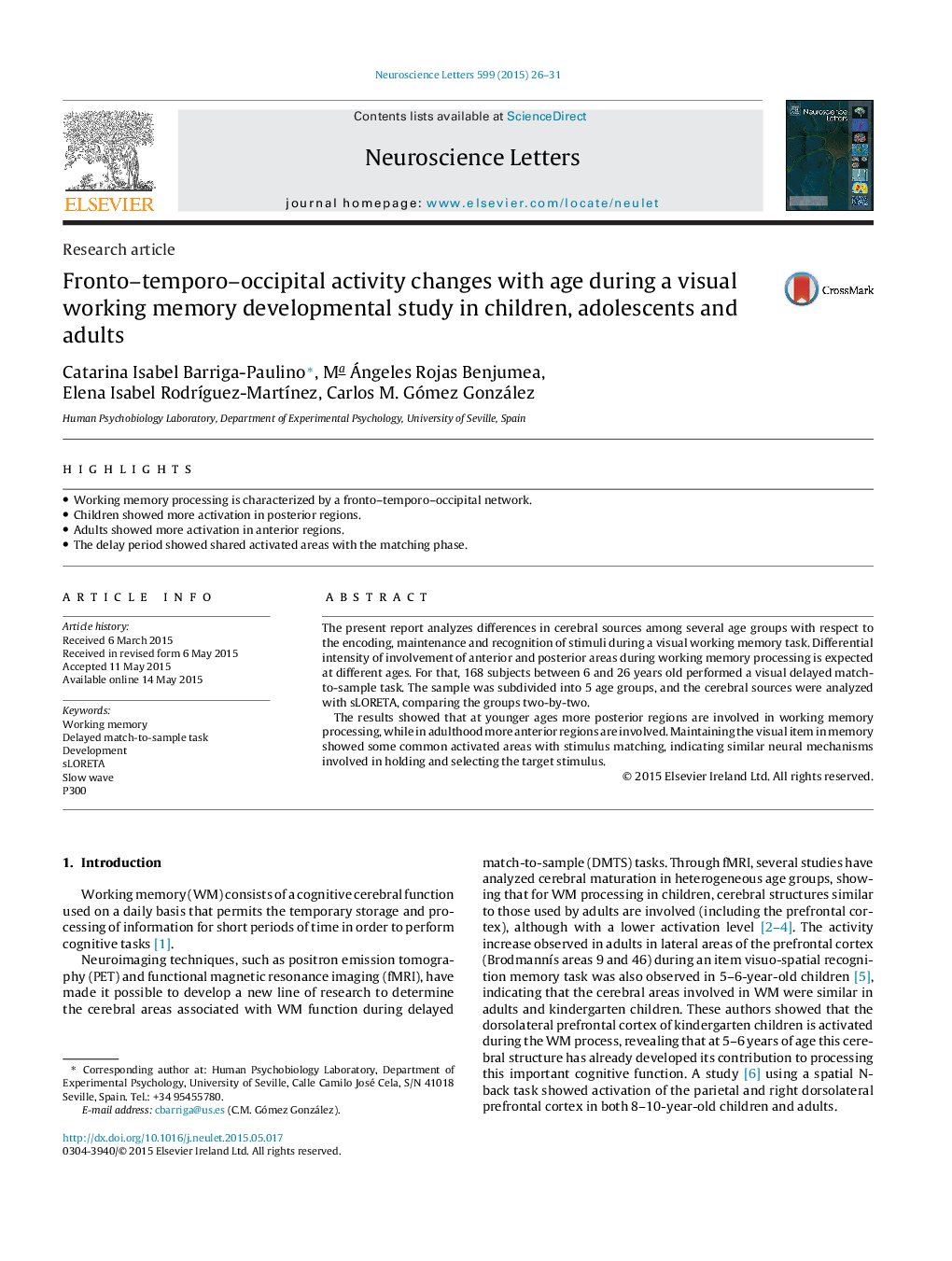| Article ID | Journal | Published Year | Pages | File Type |
|---|---|---|---|---|
| 4343425 | Neuroscience Letters | 2015 | 6 Pages |
•Working memory processing is characterized by a fronto–temporo–occipital network.•Children showed more activation in posterior regions.•Adults showed more activation in anterior regions.•The delay period showed shared activated areas with the matching phase.
The present report analyzes differences in cerebral sources among several age groups with respect to the encoding, maintenance and recognition of stimuli during a visual working memory task. Differential intensity of involvement of anterior and posterior areas during working memory processing is expected at different ages. For that, 168 subjects between 6 and 26 years old performed a visual delayed match-to-sample task. The sample was subdivided into 5 age groups, and the cerebral sources were analyzed with sLORETA, comparing the groups two-by-two.The results showed that at younger ages more posterior regions are involved in working memory processing, while in adulthood more anterior regions are involved. Maintaining the visual item in memory showed some common activated areas with stimulus matching, indicating similar neural mechanisms involved in holding and selecting the target stimulus.
